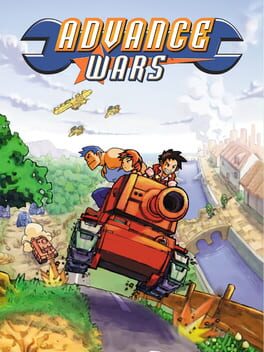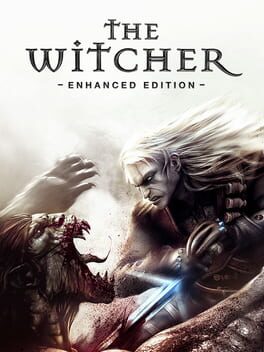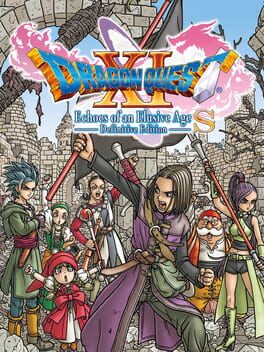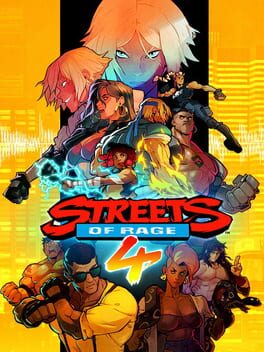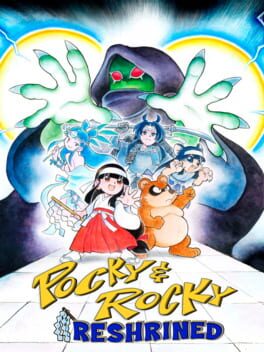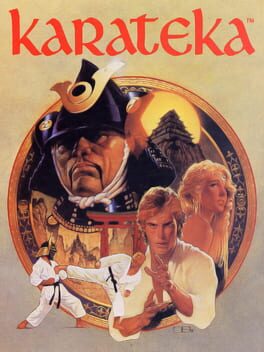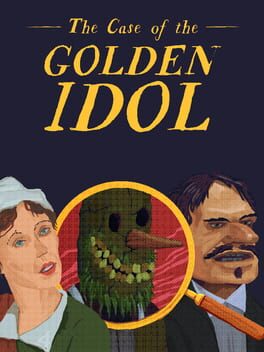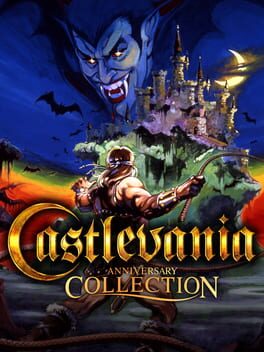big_douglas
2008
Surprisingly high-quality and with a lot of great challenge and creativity to the rhythm games. Even using the coins you earn to play around with simple rhythm "toys" or minigames was a really charming touch. The game has so much heart to it while also taking its central mechanics seriously. I just wish I was better at it!
2022
This review contains spoilers
There was a point maybe 40 hours in when I was tiring of advancing through the game, where exploration was starting to feel like a rote exercise of content that seemed sort of copy/pasted around the map. You see a type of thing, you know what's going to be there and roughly what to expect. Even beelining the main quest seemed really daunting because I doubted I would be able to advance quickly enough without having to grind levels on the side, which would require doing what I was already growing weary of. I was standing in eastern part of Limgrave, looking at my recently almost completely explored map of nearby areas, daunted by the task of wandering east, and staring down the barrel of god-knows-how-much lie beyond the recently conquered Stormveil Castle.
The turning point came when I got the ability to respec, and started looking into builds that could carry me through the end of the game. Ironically, trying to find a way to expedite my progress in the game I was starting to get sick of playing resulted in me actually loving the game and spending much more time with it than I otherwise would have.
An aspect of modern gaming that I don't often see brought up is the way that an active internet connection affects design. These "Souls" games or whatever you want to call them are, by design, made with the assumption of being actively connected to the internet. They know that they can purposefully leave things left unsaid or make quest progression absurdly obtuse and hide extremely useful items and equipment in the most unseeming or backwards places because they know that people playing these games look this stuff up. Sure it's easy to imagine some superman who comes across everything naturally, exploring every nook of the Lands Between with a beautiful moleskin for note-taking on their lap, but most people are going to for whatever reason look one thing up, see the detail for another thing that would be almost impossible to come across in a desired manner organically, and understand that they're not losing out on anything at all by reading a wiki for something so minor.
In that way I felt like I was actually playing the game as intended. Seeing what I was missing in order to make a build that could allow me to play in a way I felt rewarding turned the game into goal-oriented exploring which was in no way less challenging or less rewarding than coming upon it naturally. Once I had made my desired build I just kept looking up equipment that could improve it further down the line, and acquiring that so I would have it when my level was high enough. In the process of doing that I would uncover new and interesting areas that I would explore organically just as I had at the start of the game.
The ability to respec in the game combined with starting out as the Wretch like I had, was that unlike the previous Fromsoft game I had played (DS:R) it means that not only can I change up how I play the game whenever I want, it also means that acquiring items is always potentially relevant to future builds and expanding ways you can enjoy the game. NG+ also gets a new lease in that sense. That detail makes exploration much more worth the while.
Looking forward to the DLC, putting the game down until then.
The turning point came when I got the ability to respec, and started looking into builds that could carry me through the end of the game. Ironically, trying to find a way to expedite my progress in the game I was starting to get sick of playing resulted in me actually loving the game and spending much more time with it than I otherwise would have.
An aspect of modern gaming that I don't often see brought up is the way that an active internet connection affects design. These "Souls" games or whatever you want to call them are, by design, made with the assumption of being actively connected to the internet. They know that they can purposefully leave things left unsaid or make quest progression absurdly obtuse and hide extremely useful items and equipment in the most unseeming or backwards places because they know that people playing these games look this stuff up. Sure it's easy to imagine some superman who comes across everything naturally, exploring every nook of the Lands Between with a beautiful moleskin for note-taking on their lap, but most people are going to for whatever reason look one thing up, see the detail for another thing that would be almost impossible to come across in a desired manner organically, and understand that they're not losing out on anything at all by reading a wiki for something so minor.
In that way I felt like I was actually playing the game as intended. Seeing what I was missing in order to make a build that could allow me to play in a way I felt rewarding turned the game into goal-oriented exploring which was in no way less challenging or less rewarding than coming upon it naturally. Once I had made my desired build I just kept looking up equipment that could improve it further down the line, and acquiring that so I would have it when my level was high enough. In the process of doing that I would uncover new and interesting areas that I would explore organically just as I had at the start of the game.
The ability to respec in the game combined with starting out as the Wretch like I had, was that unlike the previous Fromsoft game I had played (DS:R) it means that not only can I change up how I play the game whenever I want, it also means that acquiring items is always potentially relevant to future builds and expanding ways you can enjoy the game. NG+ also gets a new lease in that sense. That detail makes exploration much more worth the while.
Looking forward to the DLC, putting the game down until then.
2001
I was enraptured by the gameplay the whole way through the campaign, even if the storyline and the way it was told was more cutesy than interesting. There’s a good bit of variation throughout but I often felt like there wasn’t much of a logical progression in mechanics and scenarios past a certain point.
The visual style of the artwork is incredible as well, every pixel available is utilized to make the experience engrossing. The constant changes between the minimalist and beautiful world map to the close ups of the combat featuring detailed environments and unique unit sprites for each faction make the game visually interesting. The music is however pretty repetitive after a while, though there’s nothing wrong with the pieces themselves, there just could have been maybe variations on themes now and then.
The War Room mode also offers select challenges of varying nature, which is fun for those who want even more tactics. Once beating the game you can also purchase the Advance Campaign from the in-game shop and play a much more challenging version of the campaign mode, I tried it a bit but don’t think I’m at the level of skill it requires yet.
The visual style of the artwork is incredible as well, every pixel available is utilized to make the experience engrossing. The constant changes between the minimalist and beautiful world map to the close ups of the combat featuring detailed environments and unique unit sprites for each faction make the game visually interesting. The music is however pretty repetitive after a while, though there’s nothing wrong with the pieces themselves, there just could have been maybe variations on themes now and then.
The War Room mode also offers select challenges of varying nature, which is fun for those who want even more tactics. Once beating the game you can also purchase the Advance Campaign from the in-game shop and play a much more challenging version of the campaign mode, I tried it a bit but don’t think I’m at the level of skill it requires yet.
2021
Enough has been said about the cool atmosphere and the commitment to lore, as well as has been said about how unfun and dog shit the combat system is. What hasn't been discussed enough is how the way this game handles sexual encounters, which is better than every other video game I've seen them in. In this game the sex is just implied, with maybe a short setup, then the scene transitions to a heavily blurred and bloomed background with indistinguishable 3d models rubbing polygons, and imposed over that fades into focus a lewd or nude painting of whoever you are having sex with. I romanced a peasant woman with flowers, and for her portrait she was cupping her breats exposed from her open blouse with one arm while the other was ladling milk from a wooden bucket across them.
Also it's hard to think of another game with such wild discrepencies in the quality of voice acting across its cast, good grief.
I played around 6 hours and felt I had gotten a good enough impression of it, especially seeing as I had played 3 first and could recognize a ton of its DNA in this. Also made me feel more confident in my decision to leave it where I was, simply because you can tell that with 3 they achieved pretty much everything they fumbled with in this game.
Also it's hard to think of another game with such wild discrepencies in the quality of voice acting across its cast, good grief.
I played around 6 hours and felt I had gotten a good enough impression of it, especially seeing as I had played 3 first and could recognize a ton of its DNA in this. Also made me feel more confident in my decision to leave it where I was, simply because you can tell that with 3 they achieved pretty much everything they fumbled with in this game.
The production quality of this game is so consistent and impressive that you can't help but respect it even if you don't like the game much. The animations are stellar throughout the entire experience, it's a fun time, there's tons and tons of content, and the Switch port looks awesome and runs incredibly smoothly.
2020
The presentation is outstanding, the music is awesome and the art style looks amazing, especially on the Switch handheld screen. The gameplay feels very fine-tuned and responsive, the animations are great as well. All the characters have fun playstyles and it all amounts to one of the few competitive games that I feel compelled to spend time improving my skills in.
The difficulty spikes can be kind of brutal for someone like me who is bad at reflex-heavy games, and even though I got to the last stage of the last boss multiple times solo, I had to eventually give up or risk burning out on the game. This is now fully in my rotation of go-to Switch games when I have a half hour on the couch, it's incredible!
The difficulty spikes can be kind of brutal for someone like me who is bad at reflex-heavy games, and even though I got to the last stage of the last boss multiple times solo, I had to eventually give up or risk burning out on the game. This is now fully in my rotation of go-to Switch games when I have a half hour on the couch, it's incredible!
Masterful level concepts and design, especially once you're past the game's first Natural Plains region. It's a simple enough challenge to be able to just complete each level relatively thoroughly on the first try in a beeline through the main missions, with the occasional quick detour to the challenge stages for some upgrade materials. But the secrets and additional challenges make for a very satisfying way to keep engaging with the levels.
Within each region there's a theme to the levels, with genuinely unpredictable variation between them. When you get to an ice region in a game you usually can pretty accurately picture what sort of visual design and challenges you'll be running into-- here however, you're dropped into a genuinely beautiful abandoned European winter town, and advance to a destroyed subway station. Each region has this type of ambition to impress both visually and in terms of gameplay. The sound design and music are really great as well and elevate the experience, the amusement park level especially has som great tunes.
The final sequence of the game is something you'll have to experience for yourself, all I'll say is that while fighting through it I was dumbstruck that it was all part of a Kirby game. The post-game content is also cool, something of a total remix of sections of previous levels mashed together and alternate boss battle with much more challenge.
I loved playing this game with my two-year-old son sitting with me, who encouraged me to go back and fight Gorimondo probably a hundred times. Couldn't have done it without him!
Within each region there's a theme to the levels, with genuinely unpredictable variation between them. When you get to an ice region in a game you usually can pretty accurately picture what sort of visual design and challenges you'll be running into-- here however, you're dropped into a genuinely beautiful abandoned European winter town, and advance to a destroyed subway station. Each region has this type of ambition to impress both visually and in terms of gameplay. The sound design and music are really great as well and elevate the experience, the amusement park level especially has som great tunes.
The final sequence of the game is something you'll have to experience for yourself, all I'll say is that while fighting through it I was dumbstruck that it was all part of a Kirby game. The post-game content is also cool, something of a total remix of sections of previous levels mashed together and alternate boss battle with much more challenge.
I loved playing this game with my two-year-old son sitting with me, who encouraged me to go back and fight Gorimondo probably a hundred times. Couldn't have done it without him!
Pocky & Rocky Reshrined is a beautiful and faithfully represented arcade gaming experience. The music and stage designs are great, as well as the animations.
Like many arcade games though there's a decent amount of stuff that feels pretty bullshit. Like the occasional huge difficulty spike, or how you can dash perfectly onto a moving platform and still fall to your death.
Also, the progression/unlocks make no sense at all. You need to beat the game once to unlock 2-player mode, which is ridiculous. Not to mention that you have to beat the game on either normal or hard mode in order to unlock easy mode.
It is a pretty challenging game and fun, all things considered.
Like many arcade games though there's a decent amount of stuff that feels pretty bullshit. Like the occasional huge difficulty spike, or how you can dash perfectly onto a moving platform and still fall to your death.
Also, the progression/unlocks make no sense at all. You need to beat the game once to unlock 2-player mode, which is ridiculous. Not to mention that you have to beat the game on either normal or hard mode in order to unlock easy mode.
It is a pretty challenging game and fun, all things considered.
1984
What makes the gameplay engaging is what made it unlike other games of its time-- it favors cinematic presentation and fluidity of motion over precision. Well, most of the time. Beyond the basic aspects of the combat, kicking and punching at different heights, there's the added aspect of having momentum to your movement and needing to maneuver yourself before and during confrontations. It creates a real tension when you're deeply studying the enemy behavior in order to figure out how you're going to go about the fight-- should you back up and try to fake them out, or would a well-timed step forward and downward kick open an opportunity for some damage?
Two little design choices make it a bit rough, the existence of a trap that instakills you and isn't very easy to figure out how to maneuver past, as well as a mini-boss in the form of a vulture that requires more precision to fight than anything else in the game, which is very tough considering the considerable lag between input and action. Both constitute a difficulty spike that will easily kill a player who otherwise, through careful and considered approach, could beat the game in a few attempts after getting into the feel of the combat well enough.
I found everything about the game very impressive, it's visually very beautiful, the music has a lot of effect for being so minimal, and the sense of momentum and flow in the movements seems like something that just shouldn't be possible on such a platform. Shows you what can be achieved within tight limits if you have the vision and know-how.
Played on The Making of Karateka (2023) documentary game on steam. Of the included versions, this original was my favorite, I just thought it felt the best in moment-to-moment action and visuals. However the sound is way cooler in the others, and the remake in that collection is pretty faithful to the core design concepts.
Two little design choices make it a bit rough, the existence of a trap that instakills you and isn't very easy to figure out how to maneuver past, as well as a mini-boss in the form of a vulture that requires more precision to fight than anything else in the game, which is very tough considering the considerable lag between input and action. Both constitute a difficulty spike that will easily kill a player who otherwise, through careful and considered approach, could beat the game in a few attempts after getting into the feel of the combat well enough.
I found everything about the game very impressive, it's visually very beautiful, the music has a lot of effect for being so minimal, and the sense of momentum and flow in the movements seems like something that just shouldn't be possible on such a platform. Shows you what can be achieved within tight limits if you have the vision and know-how.
Played on The Making of Karateka (2023) documentary game on steam. Of the included versions, this original was my favorite, I just thought it felt the best in moment-to-moment action and visuals. However the sound is way cooler in the others, and the remake in that collection is pretty faithful to the core design concepts.
2022
Citizen Sleeper succeeds due to its great writing and compelling tabletop gameplay system. The themes at play aren't anything new for science fiction, but the way these many stories unfold is nothing less than great quality storytelling. I've currently done more or less everything that can be done in the game, and am eagerly awaiting the final chapter of the story expansion they've added.
A note about the Switch version-- the initial loading times are very long and performance while scrolling the map is horrible. One video I saw that measured fps while playing the game saw it dipping into the 20s and teens, which in practice makes the screen look jittery and blurry at the same time. It's not a dealbreaker but definitely a drawback.
A note about the Switch version-- the initial loading times are very long and performance while scrolling the map is horrible. One video I saw that measured fps while playing the game saw it dipping into the 20s and teens, which in practice makes the screen look jittery and blurry at the same time. It's not a dealbreaker but definitely a drawback.
The Case of the Golden Idol is a well written, engaging, and clever mystery game, with satisfying and intuitive gameplay mechanics to solve its puzzles. The art style and music are excellent as well, same with the humor to its writing style. The game is very fair and can be beat reasonably without the use of its hint system (I never needed it) and without needing to backtrack to other puzzles (though you're free to do so to refresh your memory on newly relevant details)
The oft-mentioned parallels to Obra Dinn are unmistakable and also a compliment, more games should emulate this general style and I look forward to what these good people put out next!
The oft-mentioned parallels to Obra Dinn are unmistakable and also a compliment, more games should emulate this general style and I look forward to what these good people put out next!
The moment-to-moment gameplay is very addictive and well-presented. The mechanics at work may be sort of opaque at times, but that ultimately serves to create the illusion that the game can't entirely be understood on the fly and therefore you'll have to simply make decisions based on your own judgment. It has an organic feel to it in that sense.
The music and themes for each character are nice, and there's a really wonderful variation in artwork for the environments and each character. Seasons and special events will mean new locations are depicted, and characters have a surprising variety of outfits and expressions for different occasions. And that's not to mention the special events with certain characters which you may or may not see in a given plathrough, giving the game an interesting sense of mystery and replay factor.
One thing that the game does capture to an almost unpleasant degree is the nature of dating, it's a social arena defined by so much artifice and charade that as you play the game you feel that same loss of a sense of self, of making choices not based on what you really think or feel but which will perhaps lead to a desirable outcome. There are a lot of things to reflect on while playing, at least for someone who can't, won't, or shan't go back to high school and do it all again.
Hugely grateful for the translating team who made it possible for us non-japanophones to finally play this game!
The music and themes for each character are nice, and there's a really wonderful variation in artwork for the environments and each character. Seasons and special events will mean new locations are depicted, and characters have a surprising variety of outfits and expressions for different occasions. And that's not to mention the special events with certain characters which you may or may not see in a given plathrough, giving the game an interesting sense of mystery and replay factor.
One thing that the game does capture to an almost unpleasant degree is the nature of dating, it's a social arena defined by so much artifice and charade that as you play the game you feel that same loss of a sense of self, of making choices not based on what you really think or feel but which will perhaps lead to a desirable outcome. There are a lot of things to reflect on while playing, at least for someone who can't, won't, or shan't go back to high school and do it all again.
Hugely grateful for the translating team who made it possible for us non-japanophones to finally play this game!
The collection itself is very well executed, including the original Japanese versions of the games alongside a first-ever English localization of Kid Dracula. The inclusion of the option for creating save states and different picture modes gives it a decent amount of flexibility for the player to get the best experience they can out of it.
Catlevania
Personally I went into it without any experience of the series and didn't know the Japanese versions are superior, so the difficulty of the first three bucked me off the games usually around 75% of the way in. This first game has such great music and atmosphere, controlling the character felt good but some stuff felt not really fine-tuned in the levels and veered into "this is bs" territory. I still feel a compulsion to beat it so I definitely will one day soon.
Castelvania II
Simon's Quest was initially much more fun and interesting to me than the first. The fact that someone had the realization this early on that an explorable world with non-enemy npcs and more of a present story in the world would be the way to go for the series was really impressive. It became sort of cumbersome to navigate and figure out though.
Castlevania III
Huge leap in every regard, the boss designs especially soar. The flexibility of being able to switch characters and alter your playthrough by taking different paths really make it timelessly enjoyable.
Castlevania IV
A departure aesthetically in many regards but I really liked it just the same. Sometimes the difficulty spikes would get really nuts for someone like me who isn't exactly excellent with reflexes.
Vampire Killer
Maybe my favorite of the collection, and the only one I fully beat. So creative and the fights felt really tough but actually were well-tuned enough to feel fair. In previous games it seemed sometimes like they didn't have a winning strategy in mind when designing a boss and just figured a skilled enough player would be able to make one up on their own. The visual tricks and variation in the level designs make it a premium experience.
Castlevania: The Adventure
Lots of cool stuff going on and good level design, but the performance is horrible (it was originally as well so this is just an accurate emulation) and the hitboxes on some enemies is truly whack. It's a learning experience in itself to try and figure out just how far outside the actual pixels of an enemy their hits will land. I made it to the final form of the last boss but after a few attempts figured I should move on.
Belmont's Revenge
If you can only play one of the GB games, play this one. Performs great, looks amazing, great level design, cool bosses.
Kid Dracula
Aesthetically really fun and cool, but gameplay wise it's kind of bs in my view. The game is a lot about failing over and over to learn exactly when and where something is going to shoot across the screen and knock you to your death, and that amount of backtracking after getting killed by something you had little chance of reacting to was not a great feeling.
The bonus art book with interviews and gameplay tips is a recommended read to, especially before you play the games because there are some vital bits of gameplay mechanics tips in there.
Catlevania
Personally I went into it without any experience of the series and didn't know the Japanese versions are superior, so the difficulty of the first three bucked me off the games usually around 75% of the way in. This first game has such great music and atmosphere, controlling the character felt good but some stuff felt not really fine-tuned in the levels and veered into "this is bs" territory. I still feel a compulsion to beat it so I definitely will one day soon.
Castelvania II
Simon's Quest was initially much more fun and interesting to me than the first. The fact that someone had the realization this early on that an explorable world with non-enemy npcs and more of a present story in the world would be the way to go for the series was really impressive. It became sort of cumbersome to navigate and figure out though.
Castlevania III
Huge leap in every regard, the boss designs especially soar. The flexibility of being able to switch characters and alter your playthrough by taking different paths really make it timelessly enjoyable.
Castlevania IV
A departure aesthetically in many regards but I really liked it just the same. Sometimes the difficulty spikes would get really nuts for someone like me who isn't exactly excellent with reflexes.
Vampire Killer
Maybe my favorite of the collection, and the only one I fully beat. So creative and the fights felt really tough but actually were well-tuned enough to feel fair. In previous games it seemed sometimes like they didn't have a winning strategy in mind when designing a boss and just figured a skilled enough player would be able to make one up on their own. The visual tricks and variation in the level designs make it a premium experience.
Castlevania: The Adventure
Lots of cool stuff going on and good level design, but the performance is horrible (it was originally as well so this is just an accurate emulation) and the hitboxes on some enemies is truly whack. It's a learning experience in itself to try and figure out just how far outside the actual pixels of an enemy their hits will land. I made it to the final form of the last boss but after a few attempts figured I should move on.
Belmont's Revenge
If you can only play one of the GB games, play this one. Performs great, looks amazing, great level design, cool bosses.
Kid Dracula
Aesthetically really fun and cool, but gameplay wise it's kind of bs in my view. The game is a lot about failing over and over to learn exactly when and where something is going to shoot across the screen and knock you to your death, and that amount of backtracking after getting killed by something you had little chance of reacting to was not a great feeling.
The bonus art book with interviews and gameplay tips is a recommended read to, especially before you play the games because there are some vital bits of gameplay mechanics tips in there.
2015
Particularly had a great time in the first hour or so, not because I didn’t enjoy the rest of the game, but because of the experience of the game’s difficulty. Often in a jrpg (this ain’t a “j” game but… clearly there’s some Mother here) you might have to grind a bit against weak enemies to ease your progression. In Hylics there’s a bit of openness to progression, so everyone’s experience might be a little different. Mine personally was getting my hylic kicked any time I ran into an enemy , eventually cowering my way around and avoiding them I amassed enough money to buy an item that spared me the blind status and I could fight my way to recruiting the first ally, which greatly improved my chances. Something about the experience of starting out beneath even being able to grind against the first enemies is going to stick with me.


